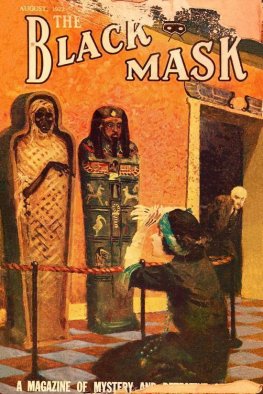John Noone - The Man Behind the Iron Mask
Here you can read online John Noone - The Man Behind the Iron Mask full text of the book (entire story) in english for free. Download pdf and epub, get meaning, cover and reviews about this ebook. year: 1980, publisher: Sutton Publishing Ltd, genre: Detective and thriller. Description of the work, (preface) as well as reviews are available. Best literature library LitArk.com created for fans of good reading and offers a wide selection of genres:
Romance novel
Science fiction
Adventure
Detective
Science
History
Home and family
Prose
Art
Politics
Computer
Non-fiction
Religion
Business
Children
Humor
Choose a favorite category and find really read worthwhile books. Enjoy immersion in the world of imagination, feel the emotions of the characters or learn something new for yourself, make an fascinating discovery.
- Book:The Man Behind the Iron Mask
- Author:
- Publisher:Sutton Publishing Ltd
- Genre:
- Year:1980
- Rating:4 / 5
- Favourites:Add to favourites
- Your mark:
- 80
- 1
- 2
- 3
- 4
- 5
The Man Behind the Iron Mask: summary, description and annotation
We offer to read an annotation, description, summary or preface (depends on what the author of the book "The Man Behind the Iron Mask" wrote himself). If you haven't found the necessary information about the book — write in the comments, we will try to find it.
The Man Behind the Iron Mask — read online for free the complete book (whole text) full work
Below is the text of the book, divided by pages. System saving the place of the last page read, allows you to conveniently read the book "The Man Behind the Iron Mask" online for free, without having to search again every time where you left off. Put a bookmark, and you can go to the page where you finished reading at any time.
Font size:
Interval:
Bookmark:
The Man Behind The
IRON MASK
For Isabelle from whose tower I first saw the island of the Iron Mask
The Man Behind The
IRON MASK
JOHN NOONE

This book was first published in 1988 by Sutton Publishing Limited
This new edition first published in 2003
The History Press
The Mill, Brimscombe Port
Stroud, Gloucestershire, GL5 2QG
www.thehistorypress.co.uk
This ebook edition first published in 2013
All rights reserved
John Noone, 1988, 2003, 2013
The right of John Noone to be identified as the Author of this work has been asserted in accordance with the Copyrights, Designs and Patents Act 1988.
This ebook is copyright material and must not be copied, reproduced, transferred, distributed, leased, licensed or publicly performed or used in any way except as specifically permitted in writing by the publishers, as allowed under the terms and conditions under which it was purchased or as strictly permitted by applicable copyright law. Any unauthorised distribution or use of this text may be a direct infringement of the authors and publishers rights, and those responsible may be liable in law accordingly.
EPUB ISBN 978 0 7524 9529 3
Original typesetting by The History Press
CONTENTS
ACKNOWLEDGEMENTS
I would like to express my thanks to the librarians and custodians of the Bibliothque Royale in Brussels and of the Bibliothque Nationale in Paris, to Linda Bull, Librarian at the British Council in Brussels, to Grard Tisserand, Curator of the Langres Museum, to Grgoire Bahry, Curator of the Armenian Museum of France, to Gerard Noone and the late Raoul Verdire.
The amendments made to the first revised edition were the consequence of comments and corrections from the late Pierre Bonvallet and the late Stanislas Brugnon, from Bernard Caire and from Jean-Christian Petitfils. For their friendship and help, I would like to record my gratitude.
THE PRINCE IN THE IRON MASK
L ost in subterranean darkness, in cavernous galleries and labyrinthine passageways, a door of massive wood, reinforced with iron, scrapes open on rusted hinges and reveals a vaulted dungeon, dank and bare, where sits the skeleton of a prisoner hung with chains, the bones strung together by rags of clothing, the skull enclosed in an iron mask. Imprisoned in the time of Louis XIV and the melancholy features behind the anonymity of the mask reduced to the anonymity behind the face - to the grimacing bare bone skull.
The scenario is pure fantasy, but in the summer of 1789 when the Paris mob swarmed into the Bastille, slaughtered the guards and liberated the prisoners, there were people ready to believe it. In the popular imagination, the Bastille was the symbol of tyranny and since the mob had met with little resistance from the guards and had found only seven prisoners to release, some sensational invention was needed to satisfy public expectation. The mouldering bones bore witness to the monstrous inhumanity of the despotic rulers of France, of a kings crime against his brother, a queens crime against her son. What did it matter to the ardent revolutionary that a skeleton in an iron mask had not really been found at all? The Man in the Iron Mask was real enough, his existence had been proved and his identity established long before. For a hundred years he had been the skeleton in the cupboard of the French Royal House and, with the overthrow of their tyranny, the truth could finally be told.
It was Voltaire, His courage in print had been so great that to escape secret agents and hired thugs he had been obliged to live most of his life as a refugee outside of France; yet he, even he, had not dared to publish the entire truth. The account he had given had been spread over various books and the underlying secret revealed only by innuendo. As early as 1738 he had written to his friend the Abb Dubos, permanent secretary of the French Academy: I am well enough informed about the affair of the Man in the Iron Mask who died in the Bastille. I have spoken to people who served him. From May 1717 until April 1718 he had himself been a prisoner in the Bastille and presumably had persuaded members of the prison staff to talk, but he had spoken also to people in government, to relatives, friends and associates of ministers and officials who had been directly involved with the prisoner.
His first remarks appeared in his Si cle de Louis XIV published in Berlin in 1751. After a reference to the death of Cardinal Mazarin, which took place in March 1661, he continued:
Some months after the death of that minister, an event without parallel occurred, and what is no less strange is that all historians are unaware of it. An unknown prisoner, of height above the ordinary, young and of an extremely handsome and noble appearance, was conveyed with the utmost secrecy to the castle on the island of Sainte-Marguerite was made governor of the Bastille and went to Sainte-Marguerite to get him and conduct him to the Bastille, still wearing the mask This unknown man died in 1703 and was buried at night in the parish church of Saint-Paul. What is doubly astonishing is that when he was conveyed to Sainte-Marguerite, no man of consequence in Europe disappeared.
A second enlarged edition of the Si cle de Louis XIV was published the following year and a supplement added the year after that. In the 1752 edition, Voltaire provided more information: M. de Chamillart was the last government minister to possess this strange secret. His son-in-law, the second Marchal de La Feuillade, told me that when his father-in-law lay dying, he begged him on his knees to tell him who this man was, who was only ever known under the name of the Man in the Iron Mask. Chamillart replied that it was a state secret and that he had taken an oath never to reveal it. In the 1753 supplement, Voltaire followed this up with a simple deduction designed to prod his reader towards his own solution of the mystery: One has only to ponder the fact that no man of any consequence disappeared at the time, and it is clear that it was a prisoner of the greatest importance whose destiny had always been a secret.
Finally, in his Questions sur lEncyclopdie published in 1770, Voltaire went as far as he dared, leading his readers on with yet another carefully directed deduction and a further piece of pointed evidence: It is clear that if he was not allowed to walk in the courtyard of the Bastille or talk to his physician except in a mask, it was for fear that some too striking resemblance would be recognized in his features As for his age, he himself told the apothecary of the Bastille a few days before his death that he thought he was about sixty years old. All the information necessary to solve the puzzle was there. The Iron Mask was someone of the highest importance, whose very existence had always been a secret, whose face bore a close resemblance to a well-known person and whose age in 1703 was about sixty years old. In the light of this evidence, a closer consideration of the second factor - the reason for the mask was enough to bring the reader to the truth which Voltaire had been afraid to publish.
The masked prisoner had been made noticeable by the very means used to render him anonymous. The authorities who forced him to wear the mask must have been aware of this. Clearly, in their estimation he nevertheless attracted less attention with the mask on his face than he would have done without it. The face of the Iron Mask is thus revealed precisely because such pains were taken to hide it. The only face universally recognizable in France at that time was the face of the King, known not only to the many who had actually seen him, whether at court, in procession or on campaign, but to anyone anywhere in the country. No other face, no matter how famous the name of its owner - were he a prince of the blood or a field-marshal, a provincial governor or a president of the Parlement - was known beyond the narrow circle of his own immediate influence. But the profile of the King, engraved as it was on the coins of the realm, was stamped indelibly upon the consciousness of the people. Since the Kings face was the only one that was universally known, the only reasonable explanation for covering the prisoners face from everyone was that he bore such a close resemblance to the King that anyone seeing him would have recognized the likeness and would have supposed that the prisoner was the King; or would have realized the very secret the King wished to hide: that the prisoner was his own flesh and blood, his living image - his identical twin-brother.
Next pageFont size:
Interval:
Bookmark:
Similar books «The Man Behind the Iron Mask»
Look at similar books to The Man Behind the Iron Mask. We have selected literature similar in name and meaning in the hope of providing readers with more options to find new, interesting, not yet read works.
Discussion, reviews of the book The Man Behind the Iron Mask and just readers' own opinions. Leave your comments, write what you think about the work, its meaning or the main characters. Specify what exactly you liked and what you didn't like, and why you think so.










